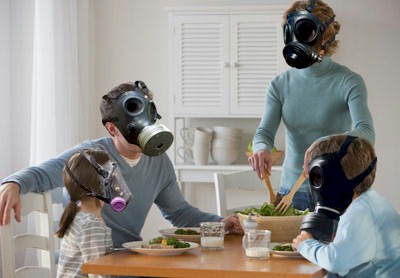I know we think that air pollution is only something that is outdoors such as smog, pollens, dust and dirt, haze and ozone. The fact is that the air inside homes, offices, and other buildings can be more polluted than the air outside.
Invisible forces are at work that you do not even see. For instance pet dander can trigger allergic reactions and asthma attacks. That is why it’s important to not only vacuum and dust regularly, but to clean carpets, rugs and furniture frequently as well as whole house duct cleaning. Dust is another indoor pollution factor that can collect literally anywhere in the home. The bedrooms and living room areas are perfect places for dust to build up especially in upholstered pieces including your BED! It is important to regularly clean bedding and other fabrics like upholstered furniture, stuffed toys, pillows and blankets often since dust mites are just as bad as pet dander. See our Facebook page at Red River Furnace and Duct Cleaning for how to clean pillows.
You don’t have pets so dander is not a problem? Nope. Even if you don’t have pets, you’ve probably got pet dander as it has become a “community allergen”. Pet owners carry it around on their clothes and shed it throughout the day. You can’t get away from it.
Dust and pet dander aren’t the only indoor air pollution factors affecting your air quality. Carbon monoxide can be detrimental because it’s odorless, colorless and toxic, and over-exposure can cause death. Household heating and cooling appliances, like air conditioning units, gas heaters, and gas stoves are sources of carbon monoxide, but these are things we use every day and so it’s essential to have a carbon monoxide detector in the home to prevent exposure.
Mold is a well-known indoor air pollutant. It’s found most often in the bathroom, because of the humidity from showers. A ventilation fan helps to control that moisture build-up. Mold also thrives in damp basements, so it’s beneficial to install a dehumidifier. If you have had any water damage it is imperative to stop the mold growing process and be sure to dry everything that has been damaged within 24-48 hours.
As if there weren’t enough factors to consider there is still the whole selection of Volatile Organic Compounds (VOCs) to worry about.
Household cleaners, paints, resins, insect pest products, fragrances and degreasers, to mention only a few on a ever growing list, can release VOCs into the air when used and stored. Some pollutants are tracked into the home, some arrive via a new furniture or carpets, carpet cleaners, or a coat of paint on the walls. Be careful when using these products and be sure that there is good ventilation. If at all possible you should buy products that don’t contain VOCs, but if unavoidable make sure these items are stored properly.
Lastly basements that are not encapsulated allow the passage of radon, the leading cause of lung cancer among non-smokers in the U.S. Winnipeg, Manitoba homes almost all have basements and radon can enter the home through the floors and walls via cracks and openings and the only way to know if it’s in your home is by getting it tested. You can hire a professional or use a DIY test kit, but it’s important to find out if your radon level is too high.
I know it sounds scary but steps can be taken to alleviate problems in all homes. See further blogs for information on how to combat the indoor air quality problems in your home.


